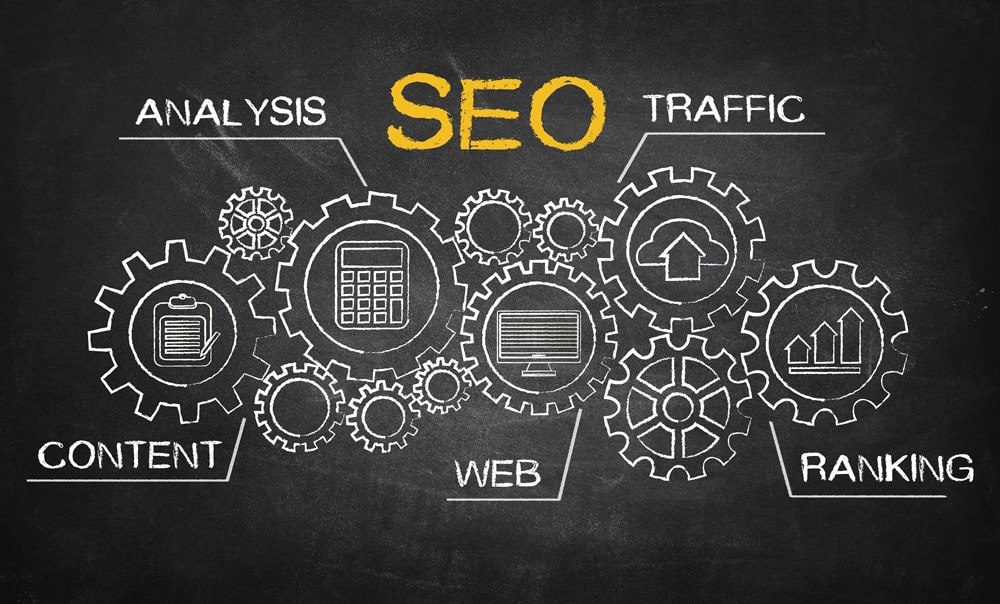
News flash: This “internet shopping” thing is here to stay
While it’s obvious that online shopping is an ever-growing juggernaut, that isn’t slowing down anytime soon, some B2C vendors are completely unaware of how competitive the eCommerce market is- in spite of the record breaking number of online transactions across the board, year after year.
Part of this growth is due to users getting more comfortable shopping from their mobile devices. Though not all users expect the same process. Some want to purchase the products as fast as possible, while others are looking for a more thoughtful and considered approach involving detailed, in-depth product descriptions.
If a website fails to enact a buyer’s preferred channel of communication, a great number of conversions can be lost, and the company will cease to exist to a large number of users.
But how do you know what is your audience looking for?
While we can’t read the minds of your buyers, in the following checklist you will find 5 fundamental elements that customers have come to expect from an online shopping experience.
As we move into 2018, the overall level of sophistication that the average online shopper will come to expect from eCommerce transactions will raise significantly. You better be sure your website is ready!
Checklist for Your eCommerce Business Website
#1 Be prepared for an increase in the number of mobile users.

Even though your website looks “decent” on a mobile device, you should take a look at your competitor’s website. If their website is loading faster than yours, and provides a better overall user experience – there is a legitimate chance your next potential transaction will end up going with your competitor instead.
In fact, Google claims that 61% of users never return to a website they’ve had trouble accessing, and 40% of those users will reach out to a direct competitor.
But, how many of them actually use mobile devices? A great deal of them! 82% of internet users own a smartphone, and 6 out of 10 searches on Google come from a mobile device.
Prioritizing mobile-responsiveness and presenting a website that loads within 5 seconds or less won’t be a competitive advantage for too long. It is swiftly becoming a necessity.
#2 Make sure your checkout process user friendly.

In order to increase the conversion rate of your website, you will need to address a myriad of ongoing components essential to your online marketing strategy. But the best place to start improving conversions is at the checkout page.
For various reasons, 4 out of 5 shoppers will navigate away from your checkout page without completing their order.
In average, 1 out of 3 users don’t complete their purchases simply because they are having issues navigating through the checkout process. And 6 out of 10 will leave the website the moment they are faced with an unexpected cost. Customers will even abandon a transaction simply because a site uses a different payment system than they’re used too.
That’s quite a leaky funnel, right?
Learning how your users interact with your website, and intelligently guiding their decisions, should be your #1 priority if you want to build relationships and increase sales.
Also remember to follow up with the customers you’ve lost and never stop improving.
#3 SEO brings ROI.

Search Engine Optimization continues to play a vital role in online marketing, and with good reason…
93% of users start their internet journey through a search engine. Almost all of online interactions start on Google, Bing and Yahoo.
But mostly Google, of course.
Google’s advertising revenue accounts for 40% of the internet’s total digital ad spending, and that revenue is larger than the entire print industry in the US.
The most important and valuable thing that Google Analytics and online marketing efforts delivers over traditional marketing methods is transparency in ROI, and a much larger reach to a broader audience.
In average, leads gained through SEO efforts have a 14% closing rate. When compared to your average leads closure of 2%, it is evident why more and more companies are investing in SEO.
Although Google best practices and guidelines are always being updated, they are extremely transparent when those changes are made, and the data gained through following these closely is an indispensable asset for your company’s growth.
#4 Do your product pages actually sell? And how much do they cost you

If you are selling products on your website, there is a high probability users that are looking for your products won’t actually land on your website’s homepage.
Most searches will direct them to the page of the product they are interested in. At this point, you should ask yourself the following questions:
- Do I have a call to action on that page?
- Are related products accessible from that same page?
- Does your customer know that you have free shipping options?
- How high quality are your images?
- Are all item specifications correct?
- Am I giving them an option to change quantities?
- Is the description clear enough?
- Is that description optimized for search engines?
- How about the title?
- Is there an add-to-cart button on each product page?
… this list could go on forever.
Optimizing user experience, and encouraging sales through each one of your assets becomes even more vital as you add more product SKUs to your website.
If efficiency equals profit, having a simple and easy to use content management system should be your priority. Do you know how many legitimate leads are left unattended due to a website’s own inefficiencies?
If you are able to have your content management organized to the point where all your offers are updated, optimized, and captivating in design – you will be able to close 50% more deals without a hitch!
You need a fast and up to date inventory management system, a fully customizable interface, and total control over your assets. Having all of these in place will help you to streamline your sales and nurture more leads to your business.
#5 Don’t Forget to Encourage Relationships.

Ask yourself these questions. All of them have simple answers, and what is even better- all of these answers can be automated!
Q: When a user lands on your website, is it clear on how to navigate to the items they are interested in?
A: Your website design should be intuitive, and support your user’s journey throughout.
Q: If they want to get in touch, how convenient is it to reach your support or sales team?
A: Your customers should be able to contact you with a simple click of the button. 50% of your buyers will do business with the vendor that responds first.
Q: When a legitimate lead decides to leave your website without making any action, do you have a follow up plan in place?
A: You should be tracking all leads that are leaving your website, and have a strategy in place to regain their attention.
On average, 72% of internet users will choose to do business with a vendor who kept the lines of communication open. Not just in terms of customer service, but also with your design, your marketing strategy, your brand image and more.
What makes Living Proof Creative different?

Living Proof Creative is a team of proficient web design, development, marketing and sales experts. We deliver your products and services to your buyers, so you don’t have to rely on multiple companies and solutions for each individual aspect of your web presence.
All the work is done at a single place. Your brand image design, your content needs, your marketing funnels – we take care of it all to ensure your business’s growth.
Plus, isn’t it way more convenient only having to dial one number when you have questions?
We have all the answers.





